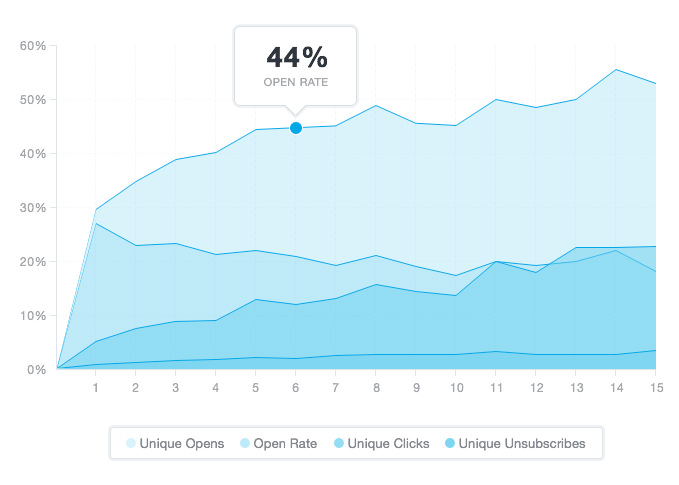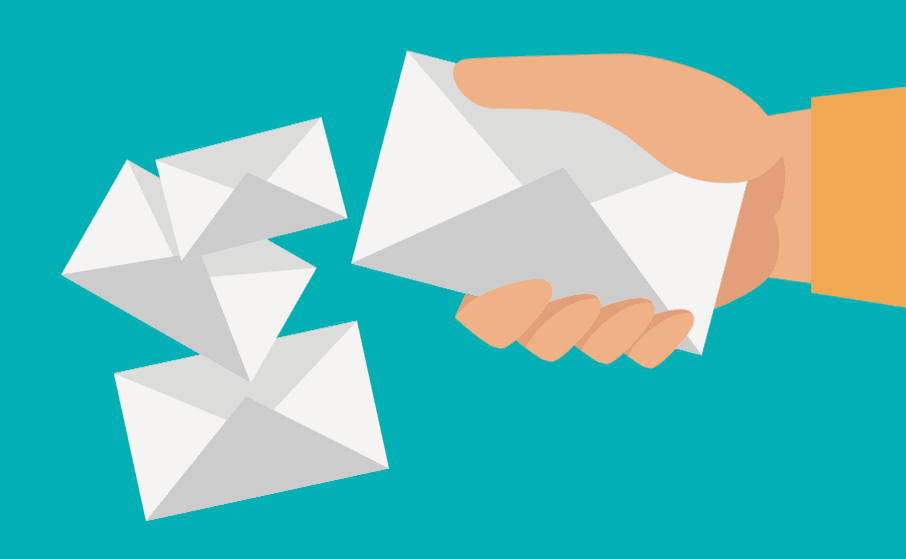Topics:
Marketing StrategyJoin 40,000+ sales and marketing pros who receive our weekly newsletter.
Get the most relevant, actionable digital sales and marketing insights you need to make smarter decisions faster... all in under five minutes.
 Word on the street is that you've been working pretty hard to build up a list of email subscribers.
Word on the street is that you've been working pretty hard to build up a list of email subscribers.
Congratulations. This is no easy feat.
But do you want to know what is easy?
Losing them.
And with email inboxes beginning to resemble the type of disorder you'd expect to see at the DMV, subscribers are quick to nix the emails that appear more intrusive than valuable.
To help you strike a balance between too much and not enough, we've turned up some data and a few actionable tips to put you on the right path.
Why People Subscribe:
- Support a business/nonprofit I like (15%)
- Show others that I like/support (25%)
- Desire to stay informed on an ongoing basis (26%)
- Gain access to exclusive content (26%)
- I'm a customer/supporter (37%)
- Take part in a specific promotion (39%)
- Receive discounts and special offers (58%)
Why People Unsubscribe:
- Too many emails from the business/non-profit (69%)
- The content is no longer relevant (56%)
- The content wasn't what I expected (51%)
- I am no longer a customer/support of the business/non-profit (48%)
- I had a bad experience with the business/non-profit (42%)
- I needed to cut back on the emails I received (34%)
- I heard negative comments about the business/non-profit (19%)
(Source: Chadwick Martin Bailey)
How Much is Too Much?
To determine the proper frequency, we turned to the reputable email marketing company, Campaign Monitor, for some data-backed insight.
Campaign Monitor analyzed over 2 billion emails to turn up some valuable insights regarding the optimal frequency for email initiatives. According to their findings, businesses that send over 5 campaigns in a 3 month period with under 25,000 subscribers see the highest open rates on their first campaign.
The data also demonstrated a 44% unique open rate for their 6th campaign, which serves as a correlation between an increase in unsubscribes and a decrease in overall opens.

So what's the ideal frequency?
Their data serves as enough grounds to suggest that sending an email every two weeks is ideal in terms of engagement.
While we value this insight, it's important to note that your email frequency is largely dependent on the behavior of your customers. So to help you determine the right frequency for your specific business, we've come up with a few suggestions to point you in the right direction.
3 Ways to Determine the Right Email Frequency
1) Ask Around
When it comes to determining the scope of topics we cover on our blog, we often turn to our subscribers for guidance. Why?
Well, why not?
After all, our subscribers, like yours, are the driving force behind clicks, opens, views, conversions, and shares. If we're not writing content that aligns with their needs, we want to know about it.
The same can be said for your email marketing strategy. If you want to ensure that your subscribers are comfortable with the amount of email they are receiving from you, poll them.
Not only will this help you streamline your approach, but it will also help you to gain the respect of your subscribers, as it demonstrates your commitment to their satisfaction (valuable data and brownie points!)
Pro Tip: Looking for an easy way to issue a poll to your subscribers? Check out Three Cents. This iPhone app makes it ridiculously easy for anyone to piece together a poll and start collecting insights in minutes.
2) Dig for Patterns
To guide your future efforts, consider dipping into some of your past campaigns to analyze your subscriber's behavior.
In doing so, you'll want to look for drop off patterns in terms of open rate and click rate to determine where subscribers begin to lose interest. Another metric to keep tabs on is the overall conversion rate, as this will help you generate an understanding of the point in which subscribers decide that they don't want to take the next step.
Let's say that you launch a campaign that enlists five canned emails, and determine that after the first three, there was a significant drop off in terms of engagement. With this information in tow, you can then adjust the frequency of your next campaign and focus on creating three action-packed emails as opposed to five.
3) Try the "Hot Potato Effect"
"Imagine taking a steaming potato out of the oven. As it singes the hair on your hand, you’re forced to throw it back and forth between your hands. However as time goes on, the potato cools down and you don’t need to throw it back and forth as often," explains direct response copywriter, Jeremy Reeves. (Source: CrazyEgg)
In terms of email frequency, your prospect's need for communication parallels this progression. In other words, right off the bat the need for back and forth communication is high and it cools down over time.
With that said, Reeves suggests that you model your frequency in accordance. For a clear picture of what this looks like, check out this chart:

If you don't have a ton of past campaigns to base your approach off of, this is a great place to start in terms of experimenting.
Free Assessment:

